MaryAnn Bernal's Blog, page 264
July 1, 2014
Weapons of Mass Destruction in the Ancient World - Archimedes Solar Death Ray
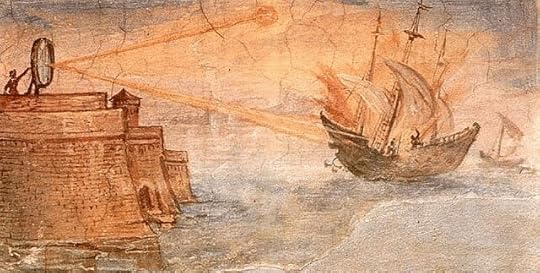
Archimedes Solar Death Ray

Archimedes of Syracuse
Archimedes Death Ray Solar Parabolic Mirror burns a fake Roman Ship
GREENPOWERSCIENCE

Published on July 01, 2014 16:07
Rare Incan 'Calculators' Found in Peru
by George Dvorsky
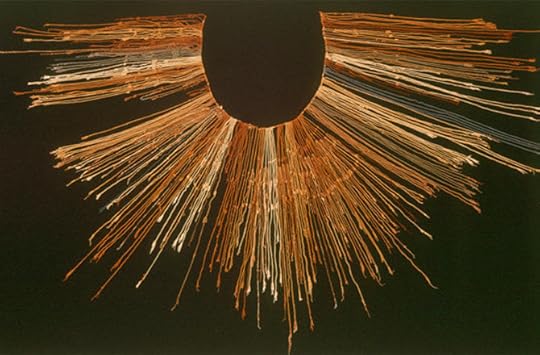 Archaeologists working in Peru have discovered 25 well-preserved quipus, an ancient string-based device used to solve mathematical problems and to assist in record-keeping.
Archaeologists working in Peru have discovered 25 well-preserved quipus, an ancient string-based device used to solve mathematical problems and to assist in record-keeping.The find was made in the archaeological complex of Incahuasi, south of Lima, Alejandro Chu, reports Peru This Week. The items were found in ancient warehouses, or kallancas, and not in a funerary context as is the norm, making this a rather unique find. The placement of the quipus suggests they were used for administrative purposes. Incahuasi was one of the most important strategic cities built by the Incas in the valley of Lunahuana.
Quipu (also called "khipus" or "talking knots") typically consisted of colored, spun, and plied thread or strings from llama or alpaca hair. They aided in data collection and record-keeping, including the monitoring of tax obligations, census records, calendrical information, and military organization. The cords contained numeric and other values encoded on knots in a base-10 positional system. Some quipu had as many as 2,000 cords.
The Khipu Database Project describes quipus and how they worked:
Most of the existing khipu are from the Inka period, approx 1400 – 1532 CE. The Inka empire stretched from Ecuador through central Chile, with its heart in Cuzco, a city in the high Andes of southern Peru. Colonial documents indicate that khipu were used for record keeping and sending messages by runner throughout the empire. There are approximately 600 khipu surviving in museums and private collections around the world.
The word khipu comes from the Quechua word for "knot" and denotes both singular and plural. Khipu are textile artifacts composed of cords of cotton or occasionally camelid fiber. The cords are arranged such that there is one main cord, called a primary cord, from which many pendant cords hang. There may be additional cords attached to a pendant cord; these are termed subsidiaries. Some khipu have up to 10 or 12 levels of subsidiaries. Khipu are often displayed with the primary cord stretched horizontally, so that the pendants appear to form a curtain of parallel cords, or with the primary cord in a curve, so that the pendants radiate out from their points of attachment. When khipu were in use, they were transported and stored with the primary cord rolled into a spiral. In this configuration khipu have been compared to string mops.
Hair Reveals Ancient Peruvians Were Stressed Out
Each khipu cord may have one or many knots. Leland Locke was the first to show that the knots had numerical significance. The Inkas used a decimal system of counting. Numbers of varying magnitude could be indicated by knot type and the position of the knot on its cord. Beginning in the 1970's, Marcia and Robert Ascher conducted invaluable research into the numeric significance of khipu, and developed a system of recording khipu details which is still in wide use today among khipu researchers. More recently, researchers such as Gary Urton have recognized the depth of information contained in non-numeric, structural elements of khipu.
Regrettably, many of these quipus were destroyed by the Spanish conquistadors in the 16th century, making this recent find all the more precious.
http://news.discovery.com/history/archaeology/rare-incan-calculators-found-in-peru-140627.htm

Published on July 01, 2014 15:30
History Trivia - England and Scotland sign the Peace of Greenwich.
July 1

69 Vespasian refused to recognize Vitellius as emperor, and had his legions acclaim him as Imperator.
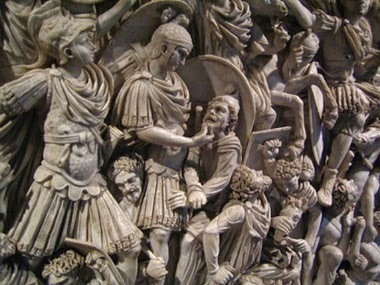
251 Battle of Abrittus: The Goths defeated Emperor Decius and his son Herennius Etruscus on swampy ground in the Dobrudja (Moesia).
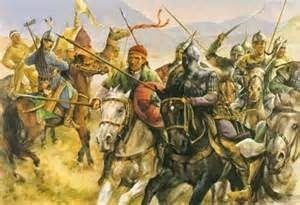
1097 First Crusaders defeated Sultan Kilidj Arslan of Nicea at the Battle of Dorylaeum.

1543 England and Scotland signed the Peace of Greenwich.

1690 William III decisively defeated the deposed James II at the Battle of the Boyne, Ireland.


69 Vespasian refused to recognize Vitellius as emperor, and had his legions acclaim him as Imperator.

251 Battle of Abrittus: The Goths defeated Emperor Decius and his son Herennius Etruscus on swampy ground in the Dobrudja (Moesia).

1097 First Crusaders defeated Sultan Kilidj Arslan of Nicea at the Battle of Dorylaeum.

1543 England and Scotland signed the Peace of Greenwich.

1690 William III decisively defeated the deposed James II at the Battle of the Boyne, Ireland.

Published on July 01, 2014 05:39
June 30, 2014
Mr. Chuckles was hovering around The Wizard's Cauldron to greet Kennedy Ryan

The Wizard says:
The wonderful thing about social networking is meeting fantastic people from around the world.
Take debut novelist Kennedy Ryan.
As a native of Georgia USA - famously, the setting for "Gone With The Wind" - the odds on us meeting would be every long indeed, but through popular romance novelist Katie Oliver, we were introduced and struck up several, often surreal, conversations.
Through wizardly powers of deduction, I soon discovered she was about to release her debut novel and extracted a promise from her to come around the Cauldron - and here she is.
I picked up the Wizphone and caught up with her somewhere near Atlanta. She was coy when I asked whether she was sipping Mint Juleps or carrying a lemon parasol.
Read more at:
http://greenwizard62.blogspot.co.uk/2014/06/debut-romance-novelist-and-passionate.html#comment-form

Published on June 30, 2014 17:49
June 29, 2014
History Trivia - Union of Kalmar signed
June 30

296 St Marcellinus began his reign as Catholic Pope. The violent persecution of Roman Emperor Diocletian dominated his papacy. Also the papal archives were seized and destroyed, but the famous Cemetery of Calixtus was saved by the Christians when they blocked its entrance.

350 Roman usurper Nepotianus, of the Constantine dynasty, was defeated and killed in Rome by troops of the usurper Magnentius.
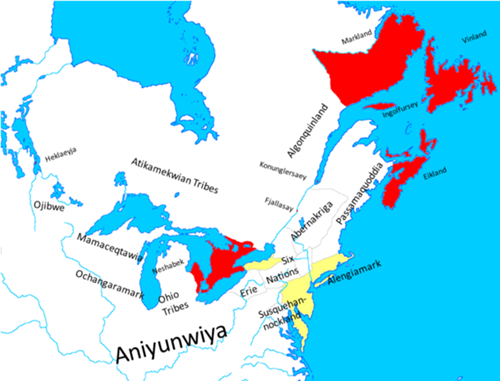
1397 Denmark, Norway & Sweden signed the Union of Kalmar under Queen Margaretha.


296 St Marcellinus began his reign as Catholic Pope. The violent persecution of Roman Emperor Diocletian dominated his papacy. Also the papal archives were seized and destroyed, but the famous Cemetery of Calixtus was saved by the Christians when they blocked its entrance.

350 Roman usurper Nepotianus, of the Constantine dynasty, was defeated and killed in Rome by troops of the usurper Magnentius.

1397 Denmark, Norway & Sweden signed the Union of Kalmar under Queen Margaretha.

Published on June 29, 2014 14:38
Everyday I'm shuffling
Published on June 29, 2014 10:02
June 28, 2014
History Trivia - Globe Theatre in London, England burns to the ground
June 29

512 a solar eclipse was recorded by a monastic chronicler in Ireland.

1194 Sverre was crowned King of Norway.

1509 Margaret Beaufort, mother of Henry VII of England died.
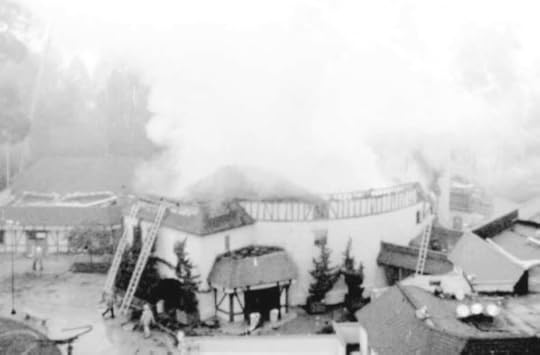
1613 London's Globe Theatre burns down when a theatrical canon is fired during the play 'All Is True'.
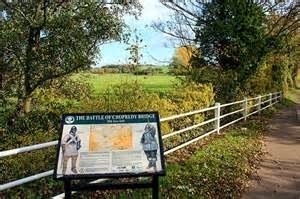
1644 Charles I of England defeated a Parliamentarian detachment at the Battle of Cropredy Bridge, the last battle won by an English King on English soil.


512 a solar eclipse was recorded by a monastic chronicler in Ireland.

1194 Sverre was crowned King of Norway.

1509 Margaret Beaufort, mother of Henry VII of England died.

1613 London's Globe Theatre burns down when a theatrical canon is fired during the play 'All Is True'.

1644 Charles I of England defeated a Parliamentarian detachment at the Battle of Cropredy Bridge, the last battle won by an English King on English soil.

Published on June 28, 2014 19:40
June 27, 2014
History Trivia - Fighters of the First Crusade defeat Kerbogha of Mosul
June 28

548 Byzantine Empress Theodora, wife of Emperor Justinian I, and thought to be the most influential and powerful woman in the Roman Empire's history, died.

767 Pope St Paul I died. His reign was dominated by relations with the Frankish and Lombard kings and with the Eastern Roman Emperor.

1098 Fighters of the First Crusade defeated Kerbogha of Mosul.

1245 First Council of Lyons (13th ecumenical council) opened
.

548 Byzantine Empress Theodora, wife of Emperor Justinian I, and thought to be the most influential and powerful woman in the Roman Empire's history, died.

767 Pope St Paul I died. His reign was dominated by relations with the Frankish and Lombard kings and with the Eastern Roman Emperor.

1098 Fighters of the First Crusade defeated Kerbogha of Mosul.

1245 First Council of Lyons (13th ecumenical council) opened
.

Published on June 27, 2014 18:38
June 26, 2014
History Trivia - Roman Emperor Julian dies, ending the Pagan Revival
June 27
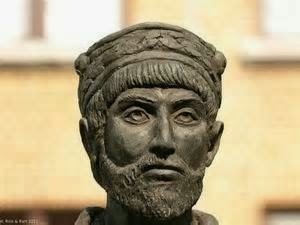
363 Roman Emperor Julian died, ending the Pagan Revival.

678 St Agatho began his reign as Catholic Pope. The great event of this pontificate was the Sixth General Council, the Third of Constantinople which extinguished the Monothelite heresy and reunited Constantinople to Rome.


363 Roman Emperor Julian died, ending the Pagan Revival.

678 St Agatho began his reign as Catholic Pope. The great event of this pontificate was the Sixth General Council, the Third of Constantinople which extinguished the Monothelite heresy and reunited Constantinople to Rome.

Published on June 26, 2014 20:51
Explorer 99.9 percent sure he found 17th-century wreck at bottom of Lake Michigan
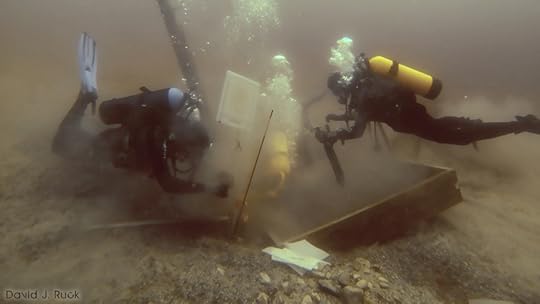 TRAVERSE CITY, Mich. – A debris field at the bottom of Lake Michigan may be the remains of the long-lost Griffin, a vessel commanded by a 17th-century French explorer, said a shipwreck hunter who has sought the wreckage for decades.
TRAVERSE CITY, Mich. – A debris field at the bottom of Lake Michigan may be the remains of the long-lost Griffin, a vessel commanded by a 17th-century French explorer, said a shipwreck hunter who has sought the wreckage for decades.Steve Libert told The Associated Press that his crew found the debris this month about 120 feet from the spot where they removed a wooden slab a year ago that was protruding from the lake bottom. Libert believes that timber was the bowsprit of Rene-Robert Cavelier, Sieur de La Salle's ship, although scientists who joined the 2013 expedition say the slab more likely was an abandoned fishing net stake.
"This is definitely the Griffin — I'm 99.9 percent sure it is," Libert said. "This is the real deal."He described the bottomland area as littered with wooden planks that could belong to a ship's bow, along with nails and pegs that would have fastened the hull to the rest of the vessel and what appeared to be sections of a mast.
VIDEO: Hundred-year-old shipwreck found off San Francisco coast
He acknowledged his dive team had found no "smoking gun" such as a cannon or other artifacts with markings identifying them as belonging to the Griffin. But the nails and other implements appeared similar to those from La Belle, another of La Salle's ships that sank near the Gulf of Mexico, Libert said.
He said his organization has sent images of the debris to three French underwater archaeologists who took part in last year's search, and that he hopes state and federal permits can be obtained to excavate in the area in September.
The French team was led by Michel L'Hour, director of the Department of Underwater Archaeological Research in the French Ministry of Culture and an authority on shipwrecks. L'Hour told the AP by email Tuesday that the latest findings were "encouraging" but that more evidence was needed to determine the origin of the items.
"The wooden remains that have been observed could correspond to a wreck," L'Hour said.
They include treenails with wedges and square nails that have some similarity with La Belle's fasteners "and a few other details already observed on wrecks dated in the 17th century," he said.
But he said the artifacts that have been seen could be dated as late as the 19th century and that items such as ceramic shards are needed to provide more certainty.
"We are always interested in participating to assess the site," L'Hour said, adding that the U.S. and France would need to approve any new involvement in the project by his team, which comprises civil officers of the French government.
Dean Anderson, Michigan's state archaeologist, said Monday he hadn't been notified of the find and could not speculate about whether the Griffin had finally been located. Anderson supports the theory that the timber discovered earlier was a fishing apparatus.
The area strewn with debris is roughly the size of a football field, said Brian Abbott of Nautilus Marine Group, who joined Libert's search this month and took sonar readings of the bottomlands. It is near tiny Poverty Island in northwestern Lake Michigan and about 50 feet below the water's surface.
The Griffin is believed to be the first ship of European design to sail the upper Great Lakes. It disappeared with a crew of six on its maiden voyage in 1679 after La Salle had disembarked near the mouth of Wisconsin's Green Bay
http://www.foxnews.com/science/2014/06/24/explorer-sure-found-17th-century-wreck-at-bottom-lake-michigan/

Published on June 26, 2014 06:42




